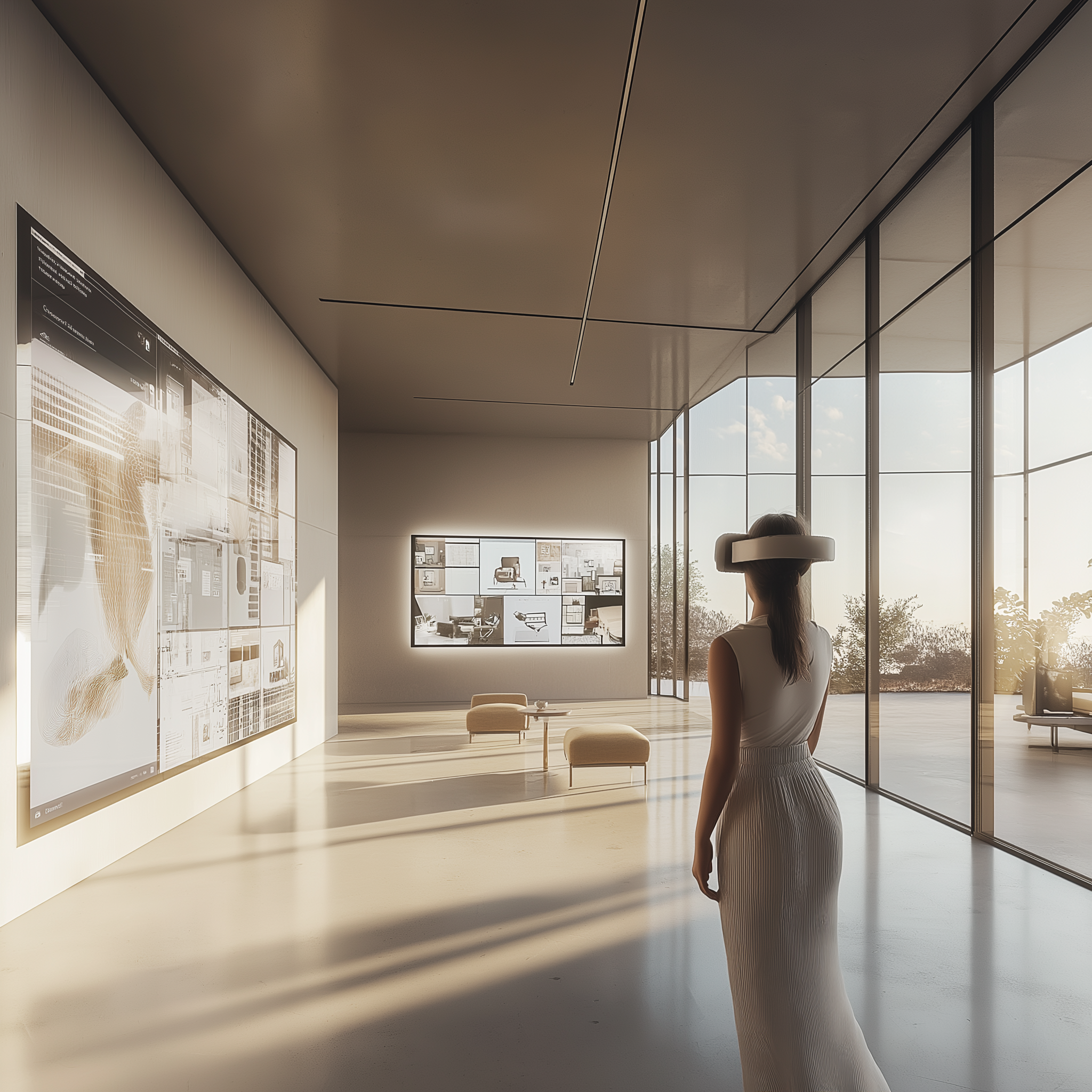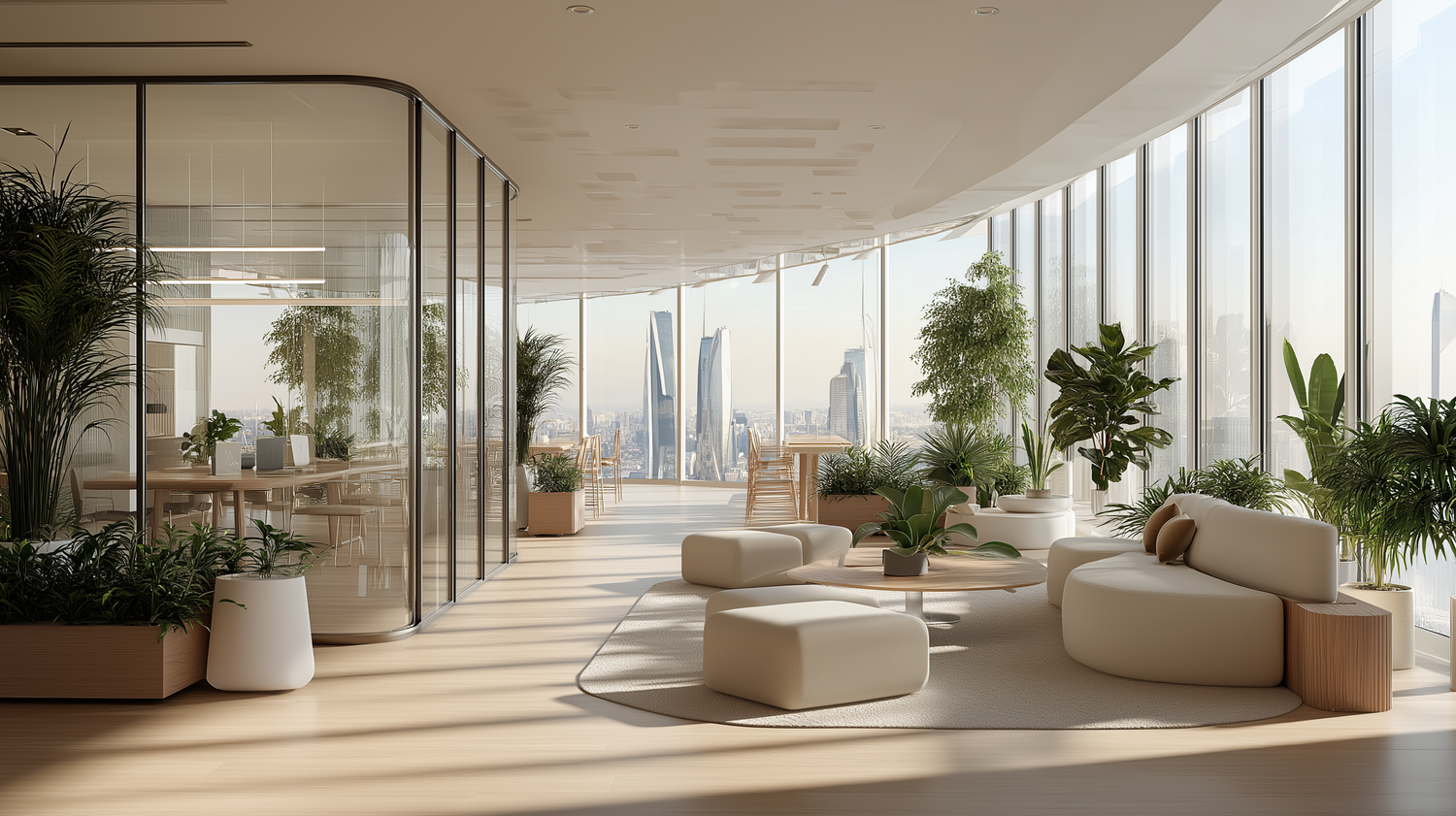From Concept to Creation: How AI Is Powering Smarter Interior Design Decisions
Imagine walking into a room that was never physically built — yet you can see it, explore it, and even tweak its furniture layout with a click. Thanks to artificial intelligence (AI), this isn’t a dream — it’s the new norm in modern interior design. From stylish home makeovers to cutting-edge office design, AI is revolutionizing the way we envision, plan, and execute interior spaces.
In this comprehensive guide, we dive into how AI tools like MidJourney, Interior AI, and AI-generated floorplans are empowering designers and clients alike to create spaces that are smarter, faster, and more personalized than ever.
Why AI is Transforming Interior Design
AI is not just another tech trend. It's a powerful tool that's reshaping how we think about space. Whether you're a top interior designer or a DIY enthusiast, these intelligent systems offer fresh perspectives and reduce the need for endless revisions.
But more importantly, AI simplifies complex decision-making processes in interior design — from choosing the right furniture to optimizing lighting and traffic flow in office spaces.
Using MidJourney for Creative Moodboards
Before the first cushion is chosen or wall painted, every project starts with a concept. That’s where MidJourney shines. This AI-powered image generator uses text prompts to produce artistic, high-quality visuals that bring vague ideas to life.
Designers can input styles like “modern minimalist office with Scandinavian furniture” or “warm boho bedroom with natural textures,” and within seconds, MidJourney delivers a gallery of inspiration. It’s faster than traditional sketching and more flexible than static references.
Interior AI: Auto-Generating Room Layouts and Style Concepts
Say goodbye to tedious manual drafting. Interior AI lets designers or homeowners upload room images, choose a style — from Japanese Zen to Urban Industrial — and instantly receive multiple variations of what that space could become.
This smart tool bridges the gap between imagination and implementation, making it a go-to for office design, real estate staging, or home renovation.
How AI-Generated Floorplans Eliminate Guesswork
Planning the structure of a room or building used to involve hours of drawing and spatial calculations. AI now automates this. Tools like Planner 5D and RoomGPT use machine learning to generate floorplans based on dimensions and usage requirements.
Designing an efficient office space? The software will suggest optimal desk placements, collaborative zones, and lighting arrangements tailored to your workflow. It’s like having a spatial genius on your team — available 24/7.
Matching Furniture with AI-Powered Recommendations
You found the perfect coffee table, but what sofa complements it best? AI tools trained on thousands of style combinations now offer real-time suggestions for matching furniture, textures, and colors.
Apps like Modsy and DecorMatters leverage augmented reality (AR) and AI to help users visualize the look and feel of rooms before a single item is purchased — minimizing costly mistakes and indecision.
AI Tools that Predict Trends and Preferences
With access to massive datasets, AI can forecast interior design trends before they hit mainstream markets. This empowers designers to stay ahead, suggesting palettes, materials, and layouts that resonate with clients.
Need a top interior designer? Look for those who use AI to offer proactive, trend-smart solutions.
Optimizing Office Design with Artificial Intelligence
The modern office space is evolving. Open floor plans, hybrid work setups, and wellness-focused interiors are in high demand. AI helps architects simulate environmental impact, acoustic behavior, and energy use — all before a wall is built.
Tools like Spaceti and Archilogic provide rich insights that lead to data-driven decisions for healthier, more efficient workplaces.
Personalized Office Spaces at Scale
For companies managing multiple offices, AI can help maintain brand consistency while adapting to local cultures. It ensures that every branch reflects the company’s identity but respects regional nuances — a blend of standardization and customization few humans can manage at scale.
How AI Supports and Enhances Designer Creativity
AI isn't replacing human designers — it’s amplifying their potential. By taking over repetitive tasks like rendering or product sourcing, AI gives professionals more time to focus on creativity, storytelling, and emotion in their work.
Many top interior designers now act more as curators, using AI to narrow choices while retaining the final creative say.
Why Top Designers Are Embracing AI
Resistance is fading fast. The best designers see AI not as a rival but as a powerful sidekick. AI tools provide a fresh pair of eyes — unburdened by habits or biases — often suggesting solutions humans overlook.
It’s no surprise that design firms embracing AI have improved project turnaround times, happier clients, and a reputation for innovation.
Sustainable Choices Through AI Simulation
Sustainability matters more than ever. AI allows designers to simulate the environmental impact of their choices — from carbon footprints of materials to long-term energy usage.
Want to choose eco-friendly furniture or lighting? Let AI guide the way, showing not just aesthetics but consequences.
Reducing Waste in Furniture and Materials
AI-driven planning leads to precision. With fewer errors and better foresight, there’s less need for over-ordering or last-minute changes. That means less material waste, fewer returns, and happier supply chains.
Virtual Walkthroughs and Real-Time Edits
Clients no longer need to wait for 2D blueprints or static renders. With tools like Enscape and Twinmotion, AI enables immersive virtual tours — where users can “walk” through rooms, tweak layouts, and change color palettes on the fly.
This transforms the design experience into something interactive, engaging, and intuitive.
Improving Communication with Interactive AI Interfaces
Say goodbye to misunderstood emails and confusing feedback loops. AI assistants now facilitate real-time design collaboration, translating client requests into actionable 3D changes and suggesting compromises when budgets clash with vision.
The Role of Emotion in Design
AI can suggest what looks good, but can it feel the space? Not quite. Human intuition — the sense of how a room "feels" — remains critical. That’s why AI is best viewed as a co-pilot, not the captain.
Emotional resonance, cultural relevance, and storytelling still need a human heart behind them.
When Human Insight Is Irreplaceable
Even the smartest AI doesn’t understand heartbreak, nostalgia, or celebration. A home is not just four walls — it’s a life. And those nuances are where the top interior designers shine brightest.
What’s Next for AI in Office and Home Interiors?
Expect even deeper personalization. AI will soon integrate with smart home systems, adjusting lighting and mood based on real-time user behaviour. Office buildings will auto-adapt layouts based on productivity trends.
The AI-design revolution is just beginning.
FAQs
Can AI replace interior designers?
No, AI supports designers by handling repetitive tasks and generating ideas, but human creativity and emotional intelligence remain vital.
What is the best AI tool for interior design beginners?
Interior AI and RoomGPT, Midjourney are user-friendly tools that don’t require professional knowledge to start.
How does AI help with office design?
It provides data-driven layouts, suggests ergonomic setups, and simulates workflow efficiencies to create productive environments.
Is AI-based furniture matching accurate?
Yes, especially when backed by large datasets and image recognition, AI can suggest furniture combinations that align with a chosen style.
Can AI help design sustainable interiors?
Definitely. AI simulations help visualize material impact and reduce waste, making it a game-changer for eco-conscious projects.
What’s the biggest benefit of AI in interior design?
Speed and precision — with AI, concept to creation happens faster, cheaper, and often with better results.
Conclusion
From inspiration boards to final floorplans, AI is redefining every step of the interior design journey. Whether you’re revamping a small office space or curating a luxury living room, these smart tools empower you to make bold, informed, and sustainable choices. Still, the heart of every great design will always be human — guided by taste, empathy, and imagination.






